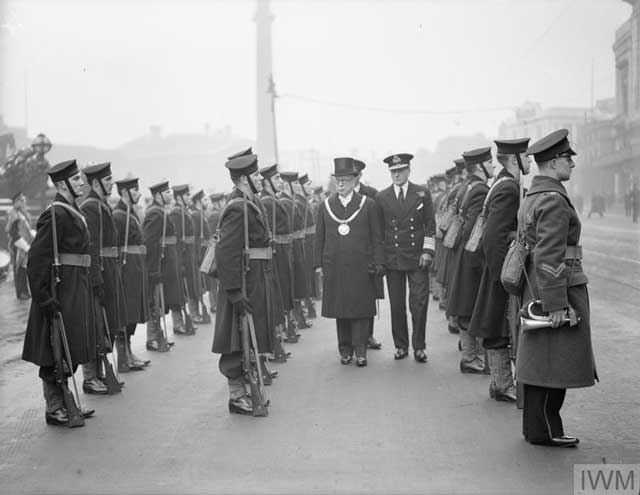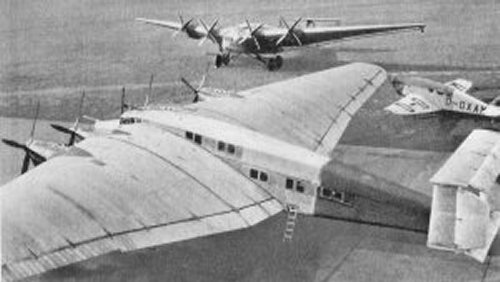Monday 19 January 1942
 |
| Latvian freighter Ciltvaira after being torpedoed by German U-boat U-123 off Cape Hatteras, NC, 19 January 1942. |
 |
| "Studio portrait of NX60119 Corporal (Cpl) Ernest Brown, 2/19th Battalion of Molong, NSW. The husband of Eleanor Mary Brown, Cpl Brown was killed in action in Malaya on 19 January 1942, aged 38. His son and namesake, NX60115 Ernest Godfrey Brown enlisted in July 1940 and served with the 2/19 Australian Infantry Battalion. Another son, NX178149 Lance Corporal Leslie Arthur Brown, enlisted March 1944 and served in both the Second World War and with the British Commonwealth Occupation Force (BCOF) in Japan." Australian War Memorial P07939.001. |
At Batu Pahat, the 2nd Battalion of the Malay Regiment retreats under pressure from its river line south to Senggarang airstrip, an area of coconut plantations and mangrove swamps. The 2000 troops fight hard but take too many casualties to hold. They gradually move toward Ponggor for a seaborne evacuation on 28 January.
 |
| A soldier explains the workings of a Bren gun on an anti-aircraft mounting to two factory workers at a weapons demonstration at Bellevue, Manchester, 19 January 1942. |
 |
| "Threat to Singapore Growing" is the main headline in the 19 January 1942 Winnipeg Free Press. |
There are neither plans nor fortifications to defend the north side of this impregnable fortress.It is impossible to know for certain whether Wavell is being outright sarcastic, but it sure seems like it.
On the same day, Churchill meets with and sends a memo to General Hastings Ismay, his military adviser and link with the Chiefs of Staff Committee, about Singapore. Ismay recalls that Churchill was in a "towering rage" about the matter. The memo reads:
I must confess to being staggered by Wavell’s telegram of the 16th and other telegrams on the same subject. It never occurred to me for a moment…that the gorge of the fortress of Singapore, with its splendid moat half a mile to a mile wide, was not entirely fortified against an attack from the northward.Taking no chances, Churchill sends orders to create defenses, stating, "no question of surrender be entertained until after protracted fighting among the ruins of Singapore city." Wavell already has instructed local commander Lieutenant-General Arthur Percival, General Officer Commanding Malaya, to do on 7 January 1942.
Percival thinks that building defensive fortifications is bad for morale and tells his subordinates to hire local laborers. He lacks authority to conscript civilian laborers for military work. The locals, affected by Japanese propaganda broadcasts from Penang (including by captured Indian soldiers formerly in British military service), refuse to work until their salary demands are met - which doesn't happen for five more days. Construction of defenses also is hampered by the fact that the water table is very near to the surface. The attitude of the local Chinese is turning all across the island - they eliminate the "chit" or credit system for Europeans, forcing them to pay with cash.
 |
| The Norfolk (Virginia) Ledger-Dispatch of 19 January 1942 is full of news about the recent spate of U-boat attacks just off the east coast of the United States. |
 |
| Captain J. Dodge, master of US tanker S.S. Malaya, attacked on 19 January 1942 off North Carolina by U-123. Dodge manages to get his damaged tanker to port. He is much luckier than some other ships' masters who perish in attacks today. (Naval History and Heritage Command NH 44608). |
 |
| "North Atlantic Patrol" is the cover story of Life magazine on 19 January 1942. |
 |
| U-67 in port at Lorient, France on 19 January 1942 as it prepares to depart on its third war patrol. That may be Kptlt. Günther Müller-Stöckheim in the conning tower (Meisinger, Rudolf, Federal Archive Bild 101II-MW-4368-36). |
- sinks 5269-ton US freighter City of Atlanta about 32.5 miles (52 km) northeast of Cape Hatteras, North Carolina (44 deaths, three survivors);
- sinks 4497-ton US freighter Brazos
- damages (it later sinks while under tow) 3779-ton Latvian freighter Ciltvaira (two dead, 29 survivors);
- damages 8206-ton US tanker Malay (the tanker makes it to Hampton Roads).
 |
| "The destroyer HMS SIKH escorting a merchantman into the Grand Harbour." This is the arrival of a small convoy at Malta on 19 January 1942 consisting of cruiser HMS Penelope, five destroyers, and three freighters. © IWM (A 7347). |
 |
| "Watching the convoy arrive in Grand Harbour." Malta, 19 January 1942. Convoys are important because they bring supplies, reinforcements, and also treasured letters from home. © IWM (A 7355). |
 |
| "The merchant ship CLAN FERGUSON entering Grand Harbour, the rest of the convoy is outside the breakwater waiting to enter." Malta, 19 January 1942. © IWM (A 7353). |
 |
| Arthur H. Compton on 19 January 1942. Compton is working at the Metallurgical Laboratory at the University of Chicago, Illinois. (Photograph of Compton courtesy of the University of Chicago Photographic Archive, apf1-01862, Special Collections Research Center, University of Chicago Library, via Atomic Heritage Foundation). |
V.B. OK - returned [his copy of the MAUD Report] - I think you had best keep this in your own safe. FDR.Bush has not been waiting for Roosevelt's explicit approval because he knows the President's overall agreement with accelerated atomic research. Under the overall direction of Standard Oil Company engineer Eger V. Murphree, Bush has appointed as program chiefs Harold Urey (diffusion and centrifuge methods and heavy-water studies), Ernest Lawrence (electromagnetic and plutonium), and Arthur Compton (fission chain reaction and weapon theory programs). The entire effort is run by the Top Policy Group, composed of Bush, James Conant, Vice President of the United States Henry Wallace, Secretary of War Henry L. Stimson, and Army Chief of Staff George C. Marshall. The effort is not yet called the "Manhattan Project," that name comes about later in 1942. At this time, funding is still relatively small and confined to financing basic electromagnetic experiments being performed by Lawrence and J. Robert Oppenheimer at the University of California at Berkeley. The focus remains on the theoretical possibilities and determining what path the program should follow rather than actually building a weapon. FDR's note, though, essentially approves the general goal of turning the science into a bomb.
 |
| "The C in C, Admiral Sir Percy Noble, KCB, CVO, inspecting the guard of Honour composed of sailors under instruction at HMS WELLESLEY. With him is the Lord Mayor of Liverpool." The two men are inspecting and welcoming the Royal Marine Band in Liverpool on 19 January 1942. © IWM (A 7168). |
American Homefront: Loew's releases "Woman of the Year," starring Spencer Tracy and Katharine Hepburn. It features the two stars as reporters at the same newspaper who fall in love but face difficulties due to their careers.
 |
| Wrens in training at Donibristle, Fife, to be photographers' assistants. "Showing the aerial film and the correct density required. Angle shot of Wren pupil being shown a film by bluejacket photographer." © IWM (A 7121). |
1942
January 1942
January 1, 1942: Declaration By United Nations
January 2, 1941: Manila Falls to Japan
January 3, 1942: ABDA Command Announced
January 4, 1942: MacArthur on His Own in the Philippines
January 5, 1942: Soviets Plan General Offensive
January 6, 1942: US Army in Europe
January 7, 1942: Soviet General Offensive Opens
January 8, 1942: Hitler Sacks Hoepner
January 9, 1942: Battle of Dražgoše
January 10, 1942: Building the Jeep
January 11, 1942: Japan Takes Kuala Lumpur
January 12, 1941: Rommel Plans Counterattack
January 13, 1942: First Ejection Seat Use
January 14, 1942: Operation Drumbeat First Sinking
January 15, 1942: U-Boat Off NYC
January 16, 1942: Carole Lombard Crash
January 17, 1942: British Take Halfaya Pass
January 18, 1942: Soviet Paratroopers in Action
January 19, 1942: FDR Approves Atomic Bomb
January 20, 1942: The Wannsee Conference
January 21, 1942: Parit Sulong Bridge Battle
January 22, 1942: Parit Sulong Massacre
January 23, 1942: Japan Takes Rabaul
January 24, 1942: Battle of Makassar Strait
January 25, 1942: Kholm Surrounded
January 26, 1942: GIs Land in Europe
January 27, 1942: Battle of Endau
January 28, 1942: Rommel Takes Benghazi
January 29, 1942: First US Coast Guard Ship Sunk
January 30, 1942: Singapore Isolated
January 31, 1942: Army Group South Averts Disaster
2020

















